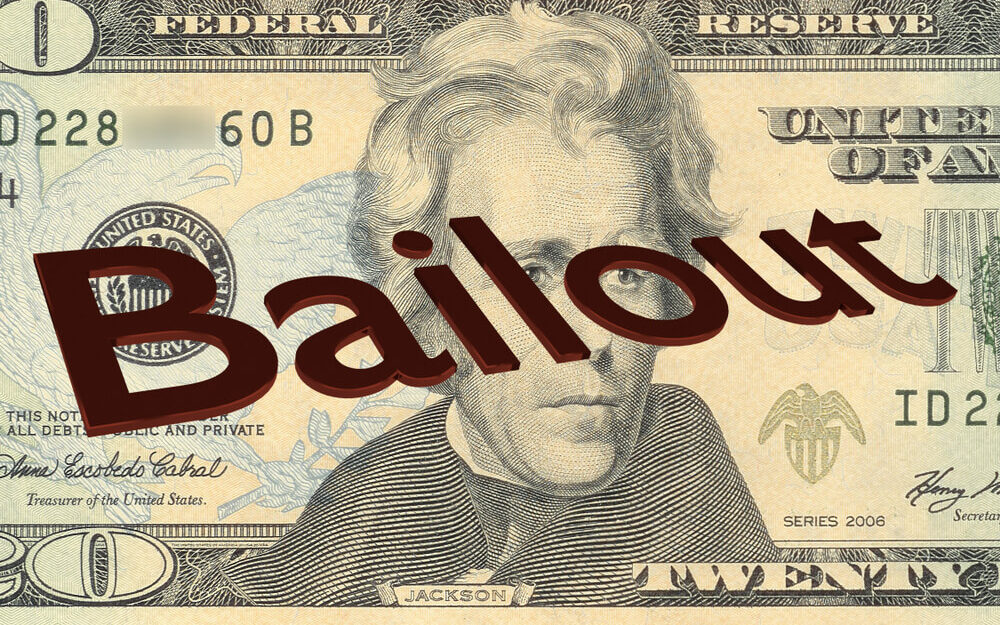Market Intervention
One of the consequences of a speculative mania is that it distorts the relationship between financial markets and the underlying economy. As the broad stock market index inflates it disconnects from the underlying economy. S&P 500 index funds become speculative instruments.
Over nearly four decades, certain choices and preferences were penalized by the Federal Reserve’s financial engineering games. Namely, hard work, diligent saving and paying one’s way. These virtues were repeatedly punished with exacting deception.
For example, the 10-Year Treasury rate peaked at over 15% in September 1981. Over the next 39 years, the crafty wizards at the Fed contrived a world of declining interest rates. The Fed put, which involves slashing interest rates whenever there’s a 20% decline in the S&P 500, could be counted on to bailout stock- and bond-market investors.
This centrally coordinated intervention had a twofold effect of observable market distortions. First, the burst of liquidity puts an elevated floor under how far the stock market falls — the put option effect. Second, the interest rate cuts inflate bond prices, as bond prices move inverse to interest rates.
Slashing interest rates also allows overindebted businesses and individuals to refinance at lower borrowing costs. Thanks to the Fed put, the central bank has been running an implicit program of counter-cyclical stock market monetary stimulus since the mid-1980s.
That world ended in July 2020, when the 10-Year Treasury rate hit a low of 0.62%. By our estimation, this marked a 5,000-year low for borrowing costs.
Throughout that nearly four-decade duration, savers got less and less on their capital. On the other hand, leverage addicted madmen got rich.
Underappreciated Danger
Maniacs were gifted the opportunity to borrow gobs of money, plow it into assets — like real estate and marginal businesses — and then refinance every several years at lower and lower rates. As rates fell, debt servicing costs fell. At the same time, asset prices went to the moon.
Since July 2020, interest rates have generally increased. The 10-Year Treasury rate is currently about 4.05%. This is still low from a historical perspective. In fact, the 10-Year Treasury rate has averaged 4.49% over the last 150 years.
Nonetheless, the current 10-Year Treasury rate of 4.05% is much, much higher relative to the 0.62% of just three years ago. This big change over such a short period is causing big problems.
The purpose of the Fed put, which was amended in 2008 to also include purchases of Treasuries and mortgage-backed securities using credit created out of thin air, was about much more than just bailing out stock and bond investors.
The primary purpose of the Fed put was to bail out big banks and big businesses, and to keep financial markets inflated and Washington supplied with cheap credit. By all honest accounts, U.S. financial markets have been rigged for at least 35 years.
Yet, now that interest rates must remain relatively higher to combat elevated consumer price inflation, the Fed is more limited in its ability to levitate the stock and bond market in a financial panic.
The dangers of moving from an era of historically low rates to an era approaching historically average rates remain underappreciated. Remember, this development is what recently triggered the collapse of Silicon Valley Bank.
Without the Fed put backstopping financial markets, a wave of corporate defaults could trigger a full meltdown.
Corporate Defaults Are Coming
When interest rates were at 5,000-year lows, businesses and corporations loaded up on debt. Unfortunately, initiatives and operations that penciled out when debt servicing costs were next to nothing, no longer work at current interest rates. Over the next several years, corporations will find it difficult to refinance their debts at rates that accommodate profit-making businesses. This will be a significant problem.
The big corporate refinancing wave for high-yield bonds won’t begin to rise in earnest until 2025, and won’t crest until 2028. In the interim, the wave is approaching, and, apart from debt rated CCC or lower, debt markets are generally ignoring it. The expectation is that central banks will bail out debt burdened corporations by lowering rates. From the Wall Street Journal:
The belief that rates will soon start coming back down still pervades the corporate-bond ecosystem. For one, ratings firms haven’t lowered the grades they give these bonds as a measure of default risk. According to S&P Global, debt classified as ‘investment grade’ is still enjoying more upgrades than downgrades. Higher-yielding ‘speculative’ or ‘junk’ bonds are being marked down, but less than in 2019.
One reason is that most of the corporate bonds outstanding today won’t start maturing until 2025, data by S&P Capital IQ shows, as firms used low rates to lock in long-term debt. Rating agencies really find issues when refinancing is a year away.
Apparently, everything is swell until then. Still, just because rating agencies are choosing to ignore an upcoming episode of corporate defaults, doesn’t mean a significant crisis isn’t developing.
And for the first time in 40 years the Fed may not deliver a bailout — at least, not in the form of slashing interest rates.
Welcome to the Era of Targeted Bailouts
Since March 2022, the Fed has increased the federal funds rate 10 times — from near zero to a range of 5% to 5.25%. The intent of this series of rate hikes is to suppress the raging consumer price inflation of the Fed’s own making.
Last month, if you recall, the Fed paused, with promises for additional rate hikes coming later this year. In fact, it’s very likely the Fed will resume rate hikes following the FOMC meeting later this month.
Similarly, Quantitative Tightening 2 (QT2) officially commenced on June 1, 2022. Yet after shrinking its balance sheet by $626 billion through the end of February 2023, the Fed then quickly added roughly $400 billion. This $400 billion, created out of thin air, was used to bail out depositors of SVB through something called the Bank Term Funding Program (BTFP).
Since then, the Fed has resumed QT2, taking its balance sheet down to about $8.3 trillion. This is about where it was prior to the SVB fiasco.
More importantly, this provides a blueprint for how the Fed will intervene in the economy and financial markets during periods of persistently higher consumer price inflation. Specifically, it will be through targeted bailouts, such as the BTFP, not the wholesale slashing of interest rates via the Fed put.
Here at the Economic Prism, we’re opposed to market intervention and bailouts of all colors and stripes. The conceit of it all, that a collection of unelected bureaucrats knows what’s best for a 330-million-person economy, sticks in our craw like a broken chicken bone.
But that’s not the half of it. In the era of targeted bailouts there’s something much, much more going on. Not only will the Fed be intervening in financial markets, it will also be directly picking and choosing who gets a bailout and who doesn’t — i.e., who wins and who loses.
In short, if you’re not a banker or a preferred corporation, you won’t get squat.
[Editor’s note: Is Joe Biden secretly provoking China to attack Taiwan? Are your finances prepared for such madness? Answers to these important questions can be found in a unique Special Report. You can access a copy here for less than a penny.]



